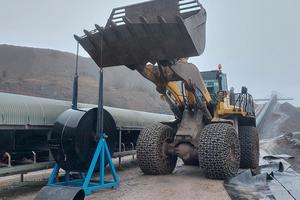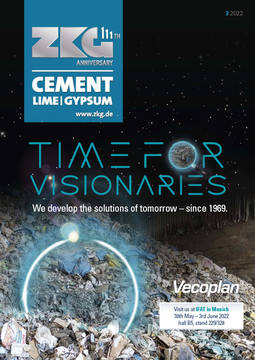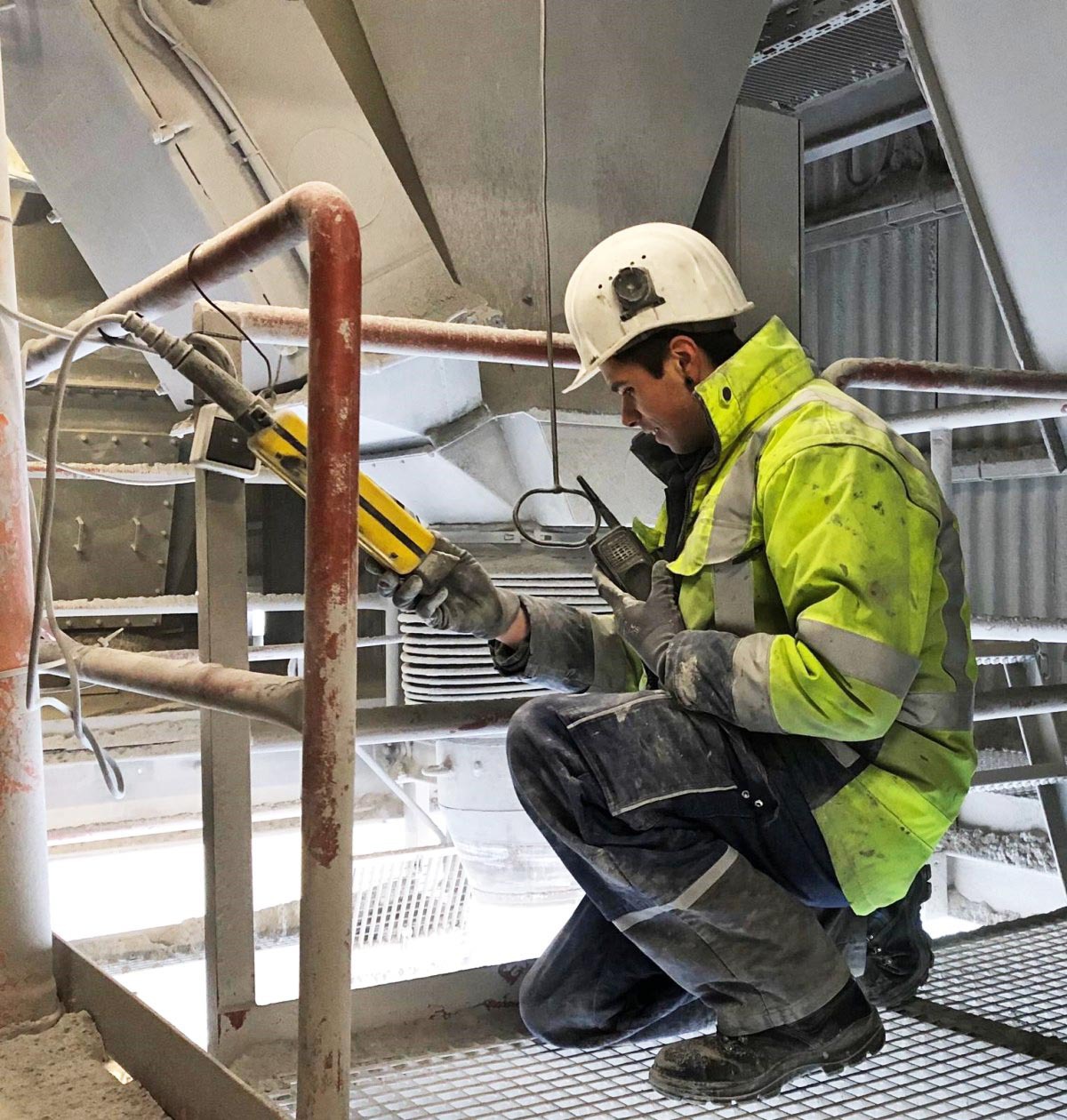820 m conveyor belt changed in the Westkalk quarry
This year’s winter repairs at the Westkalk plants in Warstein and Kallenhardt have come to an end with the replacement of an over 820 m long rubber conveyor belt at the Kallenhardt plant. The replacement had become necessary after seven years because the belt had worn down considerably over the years. During this time, the belt had also already been patched in several places. The repair project cost over € 70000. Westkalk regularly uses the winter period for maintenance and repair work, because this is also when the equipment in the processing industry, such as in the cement plants, is regularly serviced and many construction sites come to a standstill due to the weather.
It took specialists from a specialist company two days to pull the 1000 mm wide conveyor belt from a total of four rollers onto the conveyor system. Each of the three 250 m rollers weighed about 7 t. Even the smaller roller weighed more than 3.5 t. Special care was required in each case to join the sections, which was done by means of hot vulcanisation with vulcanising presses. This works similarly to patching a bicycle inner tube; however, with temperatures of about 150 °C. The very tear-resistant and durable belt has a fabric insert made of polyamide and polyester. Around it are cover plates, which are 8 mm thick on the material-carrying side; the underside is coated with 3 mm of rubber. The workers have been specially instructed for the assembly work with the wheel loader.
Conveyor belts are the main means of transport in the processing plants of the aggregate industry. At Westkalk, a large number of rubber conveyor belts of different lengths and widths can be found in the Kallenhardt and Warstein plants: some only one metre long, others with 20 m or more. The system in Kallenhardt covers by far the longest conveyor distance. It is a double-deck belt system that bridges the distance from the primary crusher to the storage silo or the washing stockpile with two conveyor belts arranged one above the other. The conveyor belt at the top is enclosed so that the crushed limestone can enter the silo dry and without dust drift. The conveyor systems are particularly at risk of wear if larger, sharp-edged stones or metal parts slit the belt lengthwise.
Incidentally, the old belt parts are not waste, but are recycled. Old conveyor belts are very popular with farmers, for example, and are used for various purposes.






